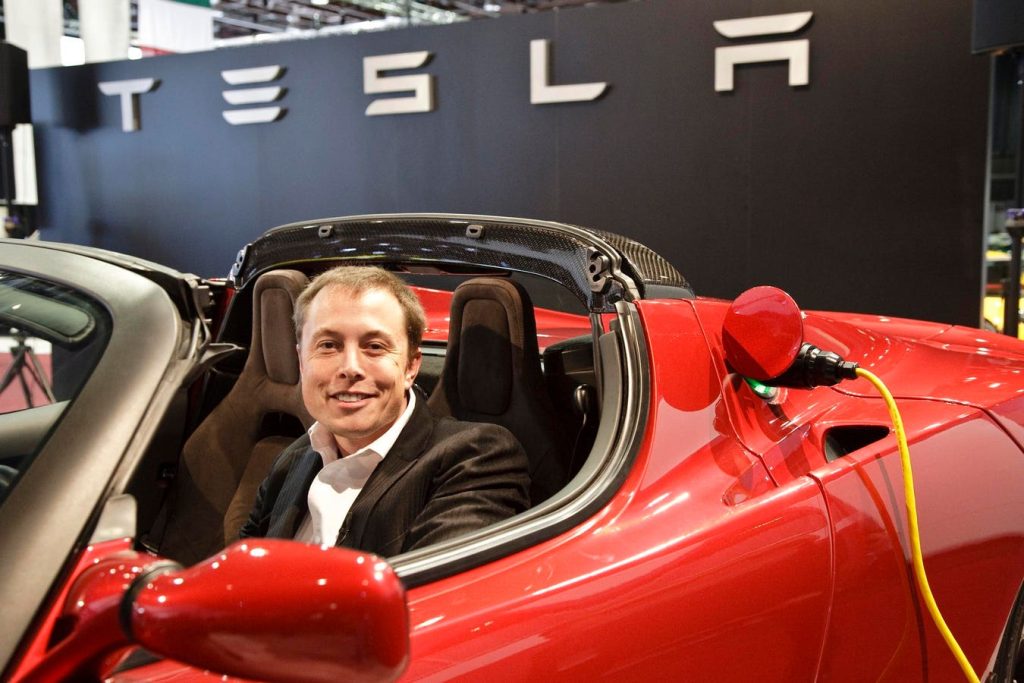Elon Musk’s 18-year-old manifesto in which the tech entrepreneur laid out his vision for the electric car maker shortly after its first public event has vanished from the company’s blog page, along with all posts by Musk and Tesla executives before 2019.
The “Secret Master Plan,” the company’s de facto constitution, laid out Musk’s perspective that Tesla’s key purpose was to show how electric vehicles and solar power could help fight climate change, in part by creating more and more affordable EVs — a view that has dramatically changed with the billionaire’s politics in recent years.
This month, Musk appeared to break with his earlier views on the risks of relying on carbon-spewing oil and gas, in his interview with climate-skeptic Donald Trump, who he’s endorsed for president.
“My views on climate change and oil gas … are pretty moderate,” Musk said during their discussion. “I don’t think we should vilify the oil and gas industry and the people that have worked very hard in those industries to provide the necessary energy to support the economy.”
It’s a far cry from his positions from Tesla’s early days: “The overarching purpose of Tesla Motors (and the reason I am funding the company) is to help expedite the move from a mine-and-burn hydrocarbon economy towards a solar electric economy, which I believe to be the primary, but not exclusive, sustainable solution,” Musk wrote in the 2006 blog. In it, he also promised that each successive Tesla model would be cheaper than one that preceded it, with a goal of making EVs widely affordable.
Despite Tesla’s success as the world’s most valuable automaker and record sales last year of 1.8 million cars, Musk has also backed off his goal for the company to sell 20 million vehicles annually by the end of the decade. Instead, he’s pivoted into promoting robotaxis and autonomous vehicles as key to Tesla’s future and profitability.
Searches for the post that Musk published on Aug. 2, 2006 – when he was the fledgling automaker’s top investor and before he took over as CEO – now go only to the company’s blog page, where the oldest entry is a Jan. 18, 2019 post. The updated version of his vision, “Master Plan, Part Deux,” published July 20, 2016, ahead of Tesla’s acquisition of failing Musk-backed solar panel installer SolarCity, also is no longer available. Versions of the missing Tesla blogs can be found via the Wayback Machine archive and the text and images appear on numerous Tesla fan sites.
The 2006 blog was posted shortly after Tesla’s first public event in July 2006, when it invited the media and public officials, including then California Gov. Arnold Schwarzenegger, for the unveiling of its Roadster EV, a Lotus Elise sports car powered by the startup’s battery pack and motor system. It served as the company’s foundational declaration of purpose at a time when the electric vehicle market was nonexistent. And in the years since it was published, Musk’s manifesto turned him and Tesla into darlings of the environmental community, helped it raise funds prior to its 2010 IPO and was even studied at Stanford University’s business school.
The purge of older Tesla blogs comes after media outlets began reporting last week that an October 2016 company post claiming “All Tesla Cars Being Produced Now Have Full Self-Driving Hardware” had disappeared. The company is facing a class-action lawsuit accusing Musk and the carmaker of misleading buyers about the autonomous driving capabilities of its vehicles. Though Musk has said the company is a leader in such technology, Tesla engineers have repeatedly confirmed its Autopilot and FSD (full self-driving) features are driver-assistance technologies that require a person to be ready to take control of the vehicle at all times.
California regulators have also charged the company with false advertising concerning its claims for Autopilot and FSD, and the National Highway Traffic and Safety Administration earlier this year identified 13 fatal crashes involving Autopilot and determined that using that name to describe the system “may lead drivers to believe that the automation has greater capabilities than it does and invite drivers to overly trust the automation.”
Musk and Tesla didn’t respond to a request for comment.
MORE FROM FORBES
Read the full article here






